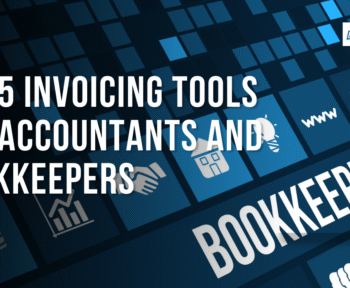Accounting plays a crucial role in any business or organization. It is the process of systematically recording, measuring, and communicating financial information. Through accounting, businesses ensure that they can assess their financial health, make informed decisions, comply with legal obligations, and build trust with investors and other stakeholders.
In this comprehensive guide, we will delve into the key aspects of accounting, covering its definition, importance, principles, types, and various methods. By the end, you will have a deep understanding of how accounting functions and why it is essential for the success of any organization.
What is Accounting
Accounting is the systematic process of identifying, measuring, recording, and communicating financial transactions. It is considered the “language of business” as it helps businesses communicate their financial information to stakeholders in a clear and standardized way.
Importance of Accounting in Business
Accounting serves multiple crucial roles in any business:
- Decision-Making: Accounting provides essential data that helps business owners, managers, and investors make informed decisions based on financial health.
- Legal Compliance: Accounting ensures that a business meets regulatory and tax obligations, reducing the risk of legal issues.
- Financial Planning: Accounting aids in budgeting, managing cash flow, and making long-term financial forecasts.
- Investor Confidence: Clear and transparent financial statements attract investors, build trust, and help secure funding for business growth.
History of Accounting
The roots of accounting can be traced back to ancient civilizations. The earliest known records of accounting come from Mesopotamia around 5,000 years ago. However, modern accounting as we know it began in Italy during the 15th century. Luca Pacioli, an Italian mathematician, is known as the “Father of Accounting” for formalizing the double-entry bookkeeping system, which remains the foundation of modern accounting.
Types of Accounting
Financial Accounting
Financial accounting involves the preparation of financial statements that summarize a company’s financial position and performance. These statements, including the balance sheet, income statement, and cash flow statement, are essential for external stakeholders, such as investors, creditors, and government regulators. The goal of financial accounting is to provide accurate and reliable financial information that can be used for decision-making.
Managerial Accounting
Managerial accounting focuses on providing information to internal management for decision-making purposes. It includes processes like budgeting, forecasting, and performance analysis. Managerial accountants prepare reports on product costs, profit margins, and business operations to help managers make informed choices for day-to-day operations.
Cost Accounting
Cost accounting is a subset of managerial accounting that focuses on calculating and analyzing the costs of producing goods or services. It helps businesses control their production costs, set prices, and evaluate profitability. Cost accounting methods like job order costing and process costing allow businesses to understand their cost structures more clearly.
Tax Accounting
Tax accounting is primarily concerned with preparing tax returns and ensuring compliance with tax laws. Tax accountants work to minimize tax liabilities by taking advantage of available deductions, credits, and tax strategies while ensuring that a business complies with all tax regulations and deadlines.
Forensic Accounting
Forensic accounting involves the use of accounting skills to investigate financial discrepancies and fraud. Forensic accountants often work in legal contexts, helping to uncover financial fraud, embezzlement, and other criminal activities. They also provide expert testimony in court cases related to financial crimes.
Auditing
Auditing involves the examination and verification of financial records to ensure they are accurate, complete, and in compliance with accounting standards and regulations. Auditors review financial statements and internal controls to assess the validity of financial reporting. There are two main types of audits: internal audits, conducted by a company’s own staff, and external audits, performed by independent firms.
Governmental Accounting
Governmental accounting focuses on the financial reporting of government entities. Unlike private-sector accounting, it involves tracking and managing public funds, budgeting for governmental projects, and ensuring that taxpayer money is spent efficiently and in accordance with laws and regulations. Governmental accountants prepare reports for public officials and taxpayers to ensure transparency in the use of public resources.
Non-profit Accounting
Non-profit accounting is focused on managing the finances of non-profit organizations, which operate differently than for-profit businesses. Non-profits must comply with unique accounting rules and regulations to ensure that their financial reporting is transparent, especially as they are often funded by donations, grants, and government support. Non-profit accountants track restricted and unrestricted funds and report on the organization’s financial health to donors and regulatory agencies.
The Principles of Accounting
Generally Accepted Accounting Principles (GAAP)
GAAP refers to a set of accounting standards, principles, and procedures used to prepare financial statements in the U.S. GAAP ensures consistency and comparability in financial reporting, making it easier for investors and other stakeholders to assess a company’s financial performance. It includes guidelines on revenue recognition, expense matching, and consistency in reporting.
International Financial Reporting Standards (IFRS)
IFRS is a set of global accounting standards used by companies outside the United States. The International Accounting Standards Board (IASB) develops these standards to improve transparency, consistency, and comparability of financial statements across borders. IFRS is used in over 140 countries, making it an essential system for multinational companies.
The Role of Accounting Standards in Financial Reporting
Accounting standards, such as GAAP and IFRS, provide a framework for preparing financial statements. These standards ensure that financial reports are reliable, consistent, and comparable across different companies and industries. By following standardized accounting methods, businesses can enhance transparency and accountability, making their financial information more valuable to stakeholders.
The Accounting Cycle
Understanding the Accounting Cycle
The accounting cycle is the series of steps accountants follow to record and process financial transactions. It begins with identifying financial transactions and ends with the preparation of financial statements. The cycle ensures that financial data is accurately recorded and summarized.
Steps in the Accounting Cycle
- Identifying Transactions: Identifying and analyzing business transactions.
- Journalizing: Recording transactions in the general journal.
- Posting: Transferring journal entries to the general ledger.
- Trial Balance: Ensuring that total debits equal total credits.
- Adjusting Entries: Adjusting accounts for accruals, deferrals, and estimates.
- Financial Statements: Preparing the income statement, balance sheet, and cash flow statement.
- Closing the Books: Closing temporary accounts and preparing for the next period.
Journals and Ledgers
- Journal: The journal is the first place where transactions are recorded. It serves as a chronological record of business events.
- Ledger: After transactions are journalized, they are posted to the ledger, which organizes the information by account.
Trial Balance, Income Statement, and Balance Sheet
- Trial Balance: A trial balance ensures that total debits equal total credits before financial statements are prepared.
- Income Statement: The income statement shows the company’s revenues, expenses, and profits over a specific period.
- Balance Sheet: The balance sheet provides a snapshot of a company’s financial position at a particular moment, detailing assets, liabilities, and equity.
Accounting Methods
Cash Basis Accounting
In cash basis accounting, revenues and expenses are recorded only when cash is received or paid. This method is simpler and often used by small businesses with straightforward operations. It does not account for accounts receivable or accounts payable.
Accrual Basis Accounting
Accrual basis accounting records revenues and expenses when they are earned or incurred, regardless of when cash is exchanged. This method provides a more accurate picture of a company’s financial position and is required for larger businesses and public companies.
Differences Between Cash and Accrual Accounting
| Feature | Cash Basis Accounting | Accrual Basis Accounting |
|---|---|---|
| Revenue Recognition | When cash is received | When earned |
| Expense Recognition | When cash is paid | When incurred |
| Complexity | Simpler | More complex |
| Suitability | Small businesses | Large businesses, public companies |
Choosing the Right Accounting Method
The choice between cash and accrual accounting depends on the size of the business, its financial needs, and the industry in which it operates. Larger businesses with complex transactions typically use accrual accounting for a more accurate financial picture.
Key Accounting Concepts
Double-entry System
The double-entry system ensures that every financial transaction affects at least two accounts. For example, when a company makes a sale, it increases both revenue and accounts receivable. This system helps maintain the accounting equation: Assets = Liabilities + Equity.
Debit and Credit Rules
- Debits increase assets and expenses, and decrease liabilities and equity.
- Credits increase liabilities and equity, and decrease assets and expenses.
Assets, Liabilities, and Equity
- Assets: Resources owned by the business (e.g., cash, inventory, buildings).
- Liabilities: Obligations that the business must pay (e.g., loans, accounts payable).
- Equity: The owner’s share in the business after liabilities are subtracted from assets.
The Accounting Equation: Assets = Liabilities + Equity
This fundamental equation underpins all accounting activities. It shows that a business’s assets are financed either through debt (liabilities) or ownership (equity).
Financial Statements Explained
The Income Statement
The income statement summarizes a company’s revenues, expenses, and profits over a specific period. It shows how much money the company made (revenues) and how much it spent (expenses), resulting in either a profit or loss.
Revenues, Costs, and Profits
- Revenues: Money earned from selling goods or services.
- Costs: Expenses incurred in producing goods or services.
- Profit: The difference between revenues and costs.
Gross Profit vs. Net Profit
- Gross Profit: Revenue minus the cost of goods sold (COGS).
- Net Profit: Gross profit minus operating expenses, taxes, and interest.
The Balance Sheet
The balance sheet provides a snapshot of a company’s financial position at a specific point in time. It lists assets, liabilities, and equity, helping to assess financial health.
Assets, Liabilities, and Equity Breakdown
- Assets: What the company owns (e.g., cash, property).
- Liabilities: What the company owes (e.g., loans, accounts payable).
- Equity: Owner’s claim after liabilities are subtracted from assets.
The Cash Flow Statement
The cash flow statement shows the cash inflows and outflows in operating, investing, and financing activities. It helps assess liquidity and the company’s ability to manage cash.
Operating, Investing, and Financing Activities
- Operating: Cash generated from core business activities.
- Investing: Cash spent or received from buying or selling assets.
- Financing: Cash from borrowing or issuing stock.
Statement of Retained Earnings
The statement of retained earnings tracks changes in the company’s retained earnings, showing how much profit was reinvested in the business instead of being distributed to shareholders as dividends.
Conclusion
Accounting is essential for any business, providing vital information for decision-making, financial planning, and regulatory compliance. Understanding accounting principles, methods, and financial statements is key to managing business finances effectively. Whether you’re an entrepreneur, investor, or financial professional, mastering accounting concepts is a fundamental step towards success.




